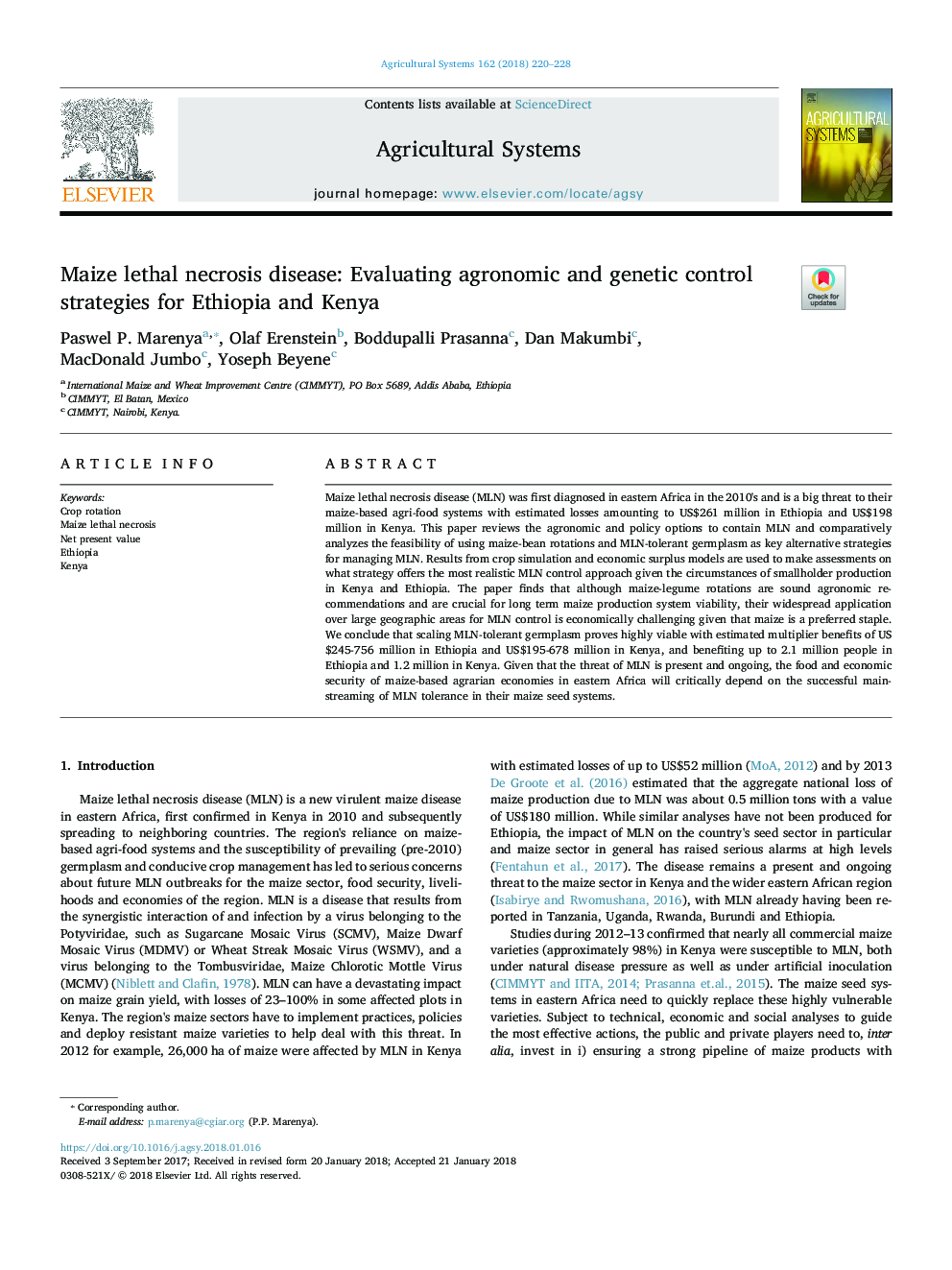| کد مقاله | کد نشریه | سال انتشار | مقاله انگلیسی | نسخه تمام متن |
|---|---|---|---|---|
| 8875035 | 1623208 | 2018 | 9 صفحه PDF | دانلود رایگان |
عنوان انگلیسی مقاله ISI
Maize lethal necrosis disease: Evaluating agronomic and genetic control strategies for Ethiopia and Kenya
ترجمه فارسی عنوان
بیماری نکروز مرگبار ذرت: ارزیابی راهکارهای کنترل زراعی و ژنتیکی اتیوپی و
دانلود مقاله + سفارش ترجمه
دانلود مقاله ISI انگلیسی
رایگان برای ایرانیان
کلمات کلیدی
تناوب زراعی، نکروز مرگبار ذرت، ارزش خالص فعلی، اتیوپی، کنیا،
موضوعات مرتبط
علوم زیستی و بیوفناوری
علوم کشاورزی و بیولوژیک
علوم کشاورزی و بیولوژیک (عمومی)
چکیده انگلیسی
Maize lethal necrosis disease (MLN) was first diagnosed in eastern Africa in the 2010's and is a big threat to their maize-based agri-food systems with estimated losses amounting to US$261 million in Ethiopia and US$198 million in Kenya. This paper reviews the agronomic and policy options to contain MLN and comparatively analyzes the feasibility of using maize-bean rotations and MLN-tolerant germplasm as key alternative strategies for managing MLN. Results from crop simulation and economic surplus models are used to make assessments on what strategy offers the most realistic MLN control approach given the circumstances of smallholder production in Kenya and Ethiopia. The paper finds that although maize-legume rotations are sound agronomic recommendations and are crucial for long term maize production system viability, their widespread application over large geographic areas for MLN control is economically challenging given that maize is a preferred staple. We conclude that scaling MLN-tolerant germplasm proves highly viable with estimated multiplier benefits of US$245-756 million in Ethiopia and US$195-678 million in Kenya, and benefiting up to 2.1 million people in Ethiopia and 1.2 million in Kenya. Given that the threat of MLN is present and ongoing, the food and economic security of maize-based agrarian economies in eastern Africa will critically depend on the successful mainstreaming of MLN tolerance in their maize seed systems.
ناشر
Database: Elsevier - ScienceDirect (ساینس دایرکت)
Journal: Agricultural Systems - Volume 162, May 2018, Pages 220-228
Journal: Agricultural Systems - Volume 162, May 2018, Pages 220-228
نویسندگان
Paswel P. Marenya, Olaf Erenstein, Boddupalli Prasanna, Dan Makumbi, MacDonald Jumbo, Yoseph Beyene,
